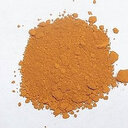Kaempferol: A Key Emphasis to Its Anticancer Potential.
Mots clés
Abstrait
A marked decrease in human cancers, including breast cancer, bone cancer, and cervical cancer, has been linked to the consumption of vegetable and fruit, and the corresponding chemoprotective effect has been associated with the presence of several active molecules, such as kaempferol. Kaempferol is a major flavonoid aglycone found in many natural products, such as beans, bee pollen, broccoli, cabbage, capers, cauliflower, chia seeds, chives, cumin, moringa leaves, endive, fennel, and garlic. Kaempferol displays several pharmacological properties, among them antimicrobial, anti-inflammatory, antioxidant, antitumor, cardioprotective, neuroprotective, and antidiabetic activities, and is being applied in cancer chemotherapy. Specifically, kaempferol-rich food has been linked to a decrease in the risk of developing some types of cancers, including skin, liver, and colon. The mechanisms of action include apoptosis, cell cycle arrest at the G2/M phase, downregulation of epithelial-mesenchymal transition (EMT)-related markers, and phosphoinositide 3-kinase/protein kinase B signaling pathways. In this sense, this article reviews data from experimental studies that investigated the links between kaempferol and kaempferol-rich food intake and cancer prevention. Even though growing evidence supports the use of kaempferol for cancer prevention, further preclinical and clinical investigations using kaempferol or kaempferol-rich foods are of pivotal importance before any public health recommendation or formulation using kaempferol.



